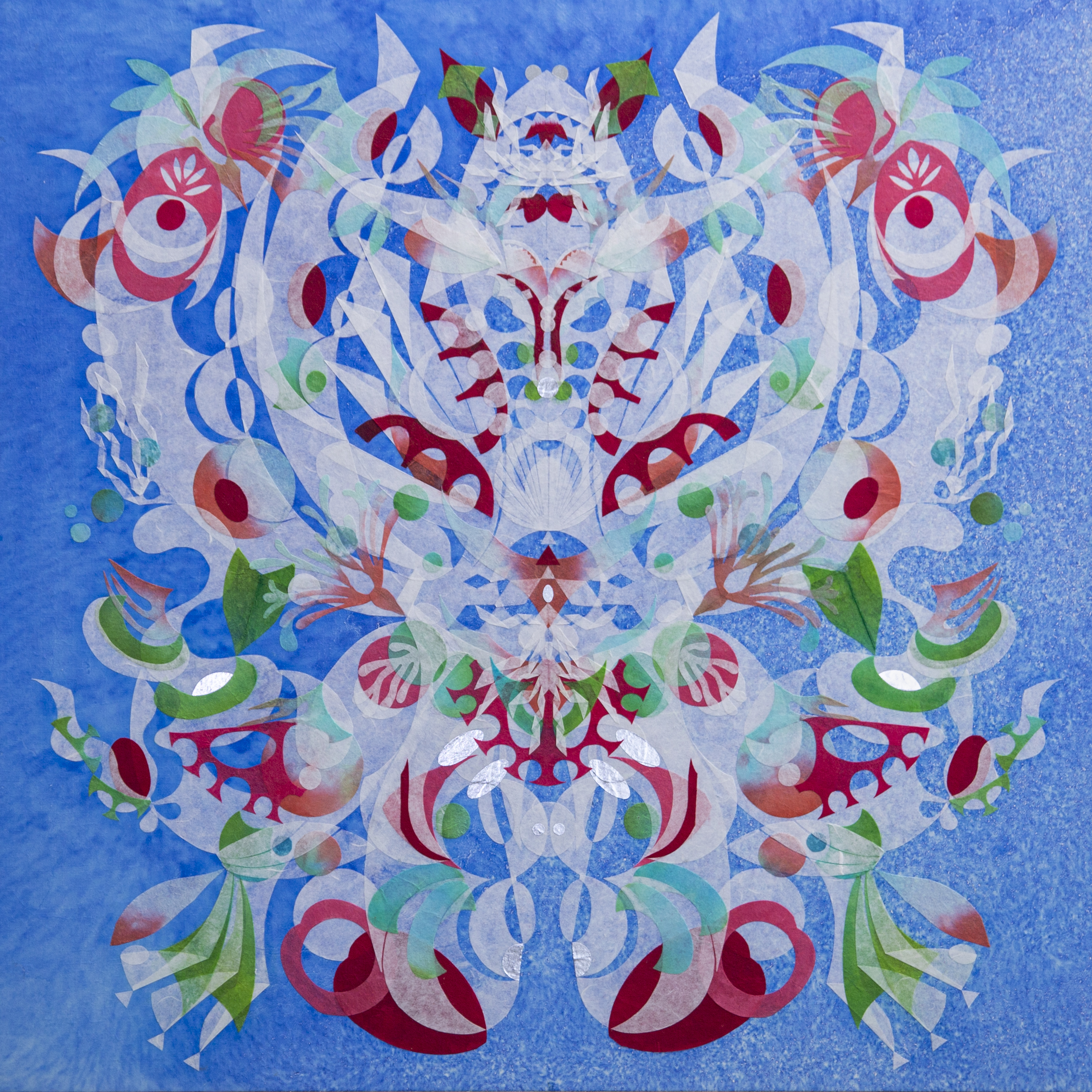
Haegue Yang
Arcane Abstractions
Exhibition
-> Feb 8 2025 – Apr 5 2025
Kurimanzutto presents Arcane Abstractions by Haegue Yang.
The exhibition brings together diverse bodies of work and an archival display of historical documents and local references closely tied to the works on view.
Structured as a ritualistic passage, the exhibition’s layout uses the architectural axes of the gallery to create symmetrical arrangements of the works, while maintaining the hybrid nature of their origins. Central pieces include Mexican- crafted interpretations of the Japanese sacred straw rope shimenawa and the Slavic pagan harvest celebratory object didukh, both of which were produced in collaboration with local artisans using traditional methods and local materials.
Freeing up the gallery floor, Arcane Abstractions features most of the exhibited elements in suspended form: wooden display for flat works, archival materials, and paired sculptural works. Fog is emitted from devices at two end corners of the gallery and gradually fills the space, slowly dissipating over time to reveal the bare floor.
Mesmerizing Votive Pagoda Lanterns are extravagantly adorned with paper flowers and colored light, while other paired motorized blind works hypnotizingly rotate in space.
The woven ceremonial structures are each inspired by shimenawa and the Korean geumjul traditionally used to mark sacred sites or objects. These ropes have been reimagined using natural fibers, such as chuspata (or tule) sourced and woven by Mexican craftsmen in the state of Michoacán.
Similarly, material hybridity is manifested in the reinterpretation of didukh—a Ukrainian ceremonial object made of woven wheat stalks—and wieńce dożynkowe—a Slavic decorative garland used in traditional harvest festivals. The Antonio Cornelio workshop in Tzintzuntzan, Michoacán adapted these Eastern European forms using the traditional weaving of panikua (or wheat straw). These cross-cultural interpretations highlight both Yang’s ongoing engagement with the transmission of cultural heritage as well as a keen desire to insert contemporary hybridity through collaboration. At the core of these concerns lie the traditional Korean garden concept of ‘borrowed landscape,’ which is not about ownership, but an appreciation of nature and environment.
Next to Yang’s Mesmerizing Mesh series of works made with mulberry paper, another focal point of the exhibition is an archival presentation of documents, objects, and publications related to ritualistic paper traditions. Drawing on her research and field trips, Yang explores the paper-cutting techniques of various cultural practices, including Korean hanji, Polish wycinanki, Philippine pabalat, Otomí amate, and Mexican papel picado. The selection of Mesmerizing Mesh in Arcane Abstractions demonstrates her most recent development in abstract compositions emerging from an interweaving of traditional visual elements drawn from Mexican, Chinese, Korean, Japanese, Punjabi, and Hmong.
Arcane Abstractions reflects Yang’s sustained inquiry into cultural heritage, material exploration, and ritualistic symbolism, seeking to foster a genuine dialogue toward fluidity without losing one’s vernacular, tribal, and civilizational perspective. Yang puts forward a proposal to live our lives today with a holistic view of mobility and technology, respect for spirituality, as well as contemplation on the resilient adaptability of both nature and humans. In so doing she offers viewers an opportunity to engage with a layered and symbolic interplay of tradition and contemporary art.
An integral part of Yang’s exhibition is the accompanying publication Mesmerizing Mesh – Power Paper, which will document her exploration of the ritualistic use of paper. Including a notable essay by Marta Turok, Power Paper serves as an introduction to paper’s role within vernacular craftsmanship and ritualistic traditions drawn from indigenous life, folk culture, and shamanism. about the artist
Haegue Yang seeks to communicate without language in a primordial and visual way: often complementing her vocabulary of visual abstraction with sensory experiences that include scent, sound, light and tactility. Combining industrial fabrication and folk craftsmanship, Yang explores the affective power of materials in destabilizing the distinction between the modern and pre-modern. Yang’s unique visual language extends across various media (from paper collage to staged theatre pieces and performative sculptures), and materials (Venetian blinds, clothing racks, synthetic straw, bells and graph paper) that are torn, lacquered, woven, lit and hung.
Her artistic explorations stem from material-based concerns, accompanied by philosophical, political and emotionally charged readings of historical events and figures. Her ongoing research is empowered by underlying references to art history, literature and political history, through which she re-interprets some of her recurrent themes: migration, postcolonial diasporas, enforced exile and social mobility. As a result, these pieces link various geopolitical contexts and histories in an attempt to understand and comment on our own time. Yang’s translation from the political and historical into the formal and abstract, demonstrates her conviction that historical narratives can be made comprehensible without being linguistically explanatory or didactic.
Haegue Yang lives and works between Seoul and Berlin.
–Kurimanzutto